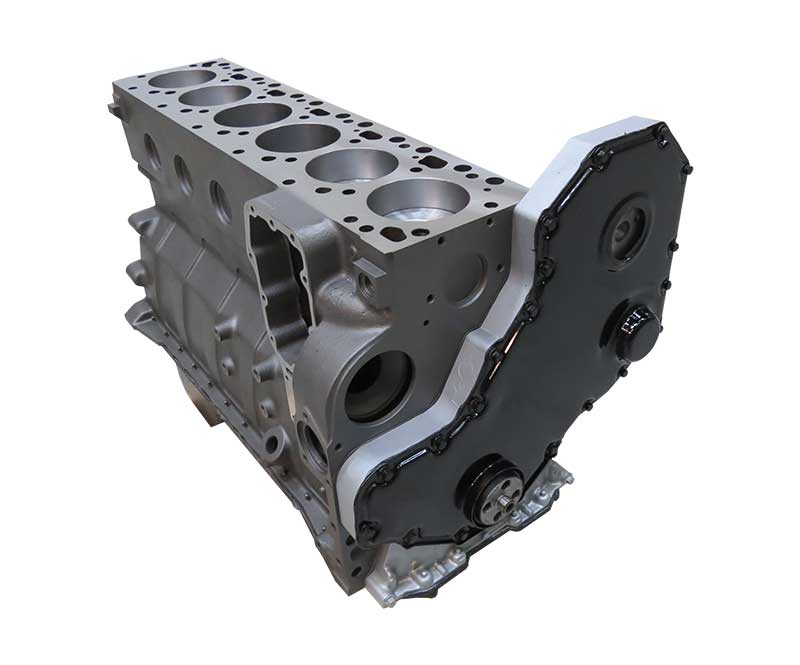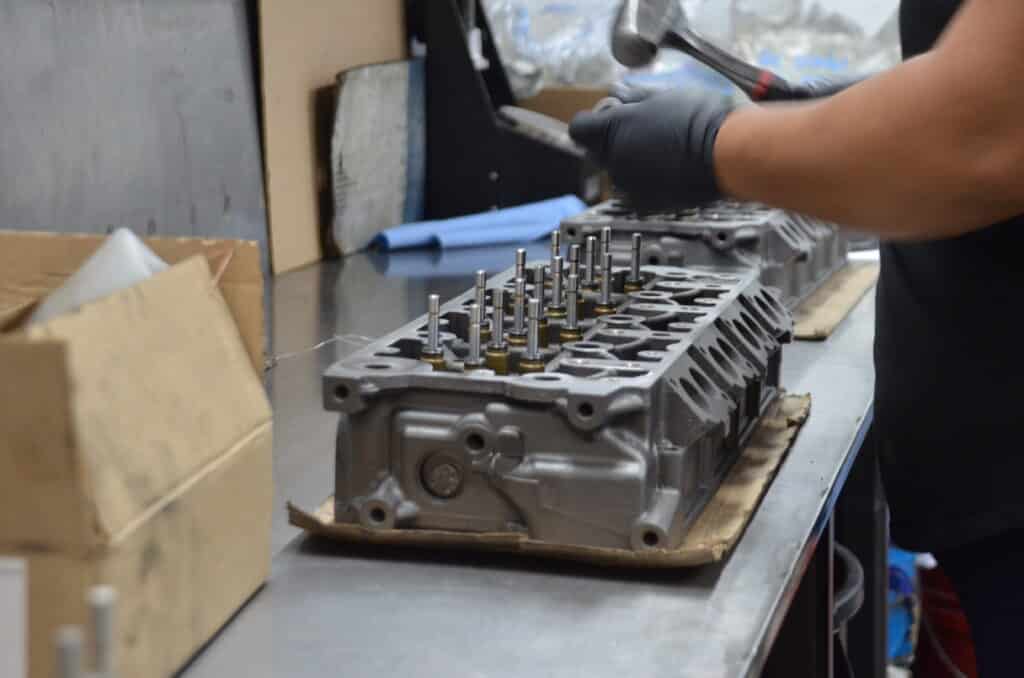What could you do with more power in your 5.9 Cummins reman engine? Improving your engine’s performance can help with:
- Towing at high altitudes
- Increased towing capacity
- Vehicle modifications
- Offroading and terrain challenges
Find out how to boost your Cummins engine horsepower and save with DFC expert insights and strategies!
How much HP can a 5.9 Cummins block handle?
Cummins 5.9 remanufactured engines are designed for strength and endurance, with a horsepower of 400 to 700. With proper conditioning and upgrades, older models with forged steel rods can handle up to an astounding 1500 horsepower. The horsepower capabilities of the engine depend on the internal components, meaning that the higher the horsepower, the more upgrades you’ll need for your fuel system, cylinders, engine block and airflow. With a DFC 5.9 Cummins long block Tow/Haul series, we recommend replacing or upgrading the oil pump and cooling system with every remanufactured engine to ensure your vehicle can handle the towing capacity.
9 Ways to increase the horsepower on a 5.9 Cummins Reman Engine
- Performance Tuning and Engine Management: Utilize aftermarket tuning solutions to optimize fuel delivery, timing, and other engine parameters.
- Upgrade the Turbocharger: Install a larger or higher-performance Cummins turbocharger for increased airflow into the engine. Increased airflow into the engine means more power at your command.
- Enhance the Exhaust System and Air Intake: Upgrade to a high-flow aftermarket exhaust system and cold air intake. Replacing restrictive factory components will unleash greater airflow, improving combustion and increasing power output.
- Upgrade the Fuel System: Enhance fuel injectors, lift pumps, and lines to support increased fueling demands.
- Consider a Performance Camshaft: Install a performance camshaft for increased power throughout the RPM range. This upgrade delivers enhanced performance and responsiveness, perfect for those seeking an exhilarating driving experience.
- Intercooler Upgrade: Swap out the factory intercooler for a larger or more efficient aftermarket unit. Reducing intake air temperatures will boost air density and improve combustion efficiency, translating into more power.
- Head Studs and Gasket Upgrade: Strengthen the engine’s head bolt system. This ensures it can handle increased cylinder pressures, providing peace of mind as you push the performance limits.
- Transmission Upgrades: Don’t overlook your transmission when upgrading your engine. Ensure it can handle increased power and torque with appropriate upgrades. From higher stall torque converters to complete transmission rebuilds, ensure your transmission is up to the task.
At DFC Diesel, we specialize in maximizing performance and reliability. Contact us today to explore your options and unleash the full potential of your 5.9 Cummins horsepower!
What is the life expectancy of a 5.9 Cummins reman engine?
It starts with proper maintenance if you want to get more out of your 5.9 Cummins remanufactured engine. Regular oil changes, coolant flushes, and quality parts ensure your engine doesn’t have build-up and part failure is caught early. With extra care and maintenance, a 5.9 Cummins engine can surpass 600,000 miles or 965,000 kilometres, while the newer 6.7 Cummins engines offer even greater longevity. Did you know some 5.9 Cummins engines have passed 1 million miles (1.6 million km)?
What year of Cummins is most reliable?
One of the top-rated reliable 5.9 Cummins engines is the 1994 to 1998 model line, known for its durable construction and potential for cheap horsepower upgrades. However, later models, such as those from 2007 to 2008, offer enhanced reliability and fuel efficiency. Regardless of its age or model, 5.9 Cummins engines encounter common problems over time, including transmission failure, rust, low horsepower, fuel injectors, and connection issues.
Are rebuilt Dodge engines worth it?
Rebuilt and remanufactured engines offer cost-effective alternatives to new engines, providing better fuel efficiency, lower maintenance costs, and improved emissions. Investing in a rebuilt engine can enhance the resale value of your vehicle while delivering reliable performance. The average cost to rebuild a 5.9 Cummins engine can range from $5,000 to $10,000, including labour, machine work, and parts, while a complete engine replacement may start around $13,000.
Are you looking for a second opinion? At DFC Diesel, we are committed to testing and refining our remanufactured engines to give you the best results for your engine. Don’t settle for the cheapest option – find the engine you want! Check out our 5.9 Cummins engines for sale and start the process for your upgrade. Contact us today to request a quote to get started!





